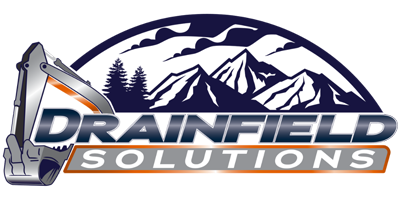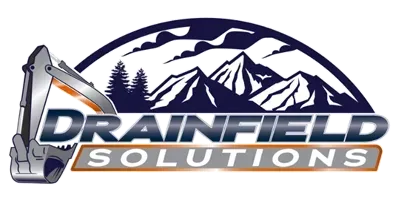Proactive Strategies for a Healthy Septic System
Routine Septic System Maintenance
Regular Septic Tank Pumping
A septic tank naturally separates solids from liquids. Over time, the solid waste accumulates and can cause blockages or even back up into your home if not removed. Septic tank pumping is recommended every 3-5 years, depending on factors like the size of the septic tank and the number of people living in the household. Regular septic tank pumping helps maintain the efficiency of the system and prevents costly repairs. Skipping this essential septic maintenance can lead to clogs, system failure, or environmental contamination.
Annual Septic System Inspections
Annual septic tank inspections by a septic professional can identify small problems before they turn into large ones. Inspectors will check for leaks, examine the sludge and scum levels in your tank, and make sure that everything is flowing properly. This proactive approach keeps your septic system in optimal condition, extending its lifespan. Look for slow draining, foul smells, or water pooling near your drainfield, as these can be signs that your septic system needs attention.
Monitor Sludge Levels
As solid waste builds up over time, it’s crucial to monitor sludge levels in your septic tank. A professional can use a tool called a sludge judge to measure these levels and determine whether septic tank pumping is needed. Excessive sludge can block drainage and cause backups, so monitoring it regularly ensures the septic tank operates efficiently.

Maintain Optimal Septic System Functionality
Regularly septic tank pumping is crucial to remove accumulated solids and sludge, preventing backups and septic system failure. It's recommended to pump your tank every 3-5 years, depending on household size and water usage. This essential septic tank maintenance step ensures your septic system operates efficiently and lasts longer.
- Prevents Costly Repairs
- Extends Septic System Lifespan
- Protects the Environment
- Promotes Healthy Home Environment
Proactive Strategies for a Healthy Septic System
Water Conservation for Septic Systems
Limit Water Usage
Excess water can overwhelm your septic system, preventing solid waste from settling in the septic tank. To avoid this, try to spread out water-intensive activities throughout the day. Rather than running several loads of laundry or multiple showers back-to-back, spread them out over several hours or days. This reduces the risk of overloading the septic system, allowing the septic tank to properly treat the wastewater.
Fix Leaks Immediately
Leaky faucets or running toilets may seem like minor issues, but they can lead to excess water being pushed into the septic system. This additional water can overload the septic tank and drainfield, diminishing the septic system’s ability to break down solids. Fix leaks as soon as you notice them to reduce strain on your septic system and conserve water at the same time.
Use High-Efficiency Fixtures
Installing high-efficiency appliances and fixtures, such as toilets, showerheads, and washing machines, reduces the amount of water entering the septic system. By using less water, these products not only save on utility bills but also extend the lifespan of your septic system. Less water means less stress on the septic tank and drainfield, which results in fewer problems over time.

Reduce The Load On Your Septic System
Conserving water is vital for the health of your septic system. Simple measures like fixing leaks, spreading out laundry and dishwashing throughout the week, and using water-efficient fixtures can significantly reduce the amount of wastewater entering your septic system. Lowering water usage helps maintain proper function and prevents overwhelming your septic tank.
- Reduces Strain on the Septic System
- Lowers Utility Bills
- Enhances Septic System Longevity
- Supports Environmental Sustainability
Proactive Strategies for a Healthy Septic System
Proper Waste Disposal
Avoid Flushing Non-Biodegradable Items
Septic systems are designed to handle human waste and toilet paper, nothing else. Items like feminine hygiene products, baby wipes, paper towels, diapers, and tissues do not break down easily and can clog the septic system. Even products marketed as "flushable" should be avoided. Clogs can lead to backups or costly septic tank repairs, so it’s best to only flush what is absolutely necessary.
No Grease or Oil Down the Drain
Fats, oils, and grease (FOG) may seem like liquids when hot, but they quickly solidify when they cool. These substances can build up in your septic system, clog pipes, and reduce the septic system's efficiency. Over time, grease can accumulate and prevent wastewater from flowing, potentially leading to expensive repair bills. Instead, dispose of FOG in the trash or use a designated grease container.
Avoid Chemical Cleaners
Harsh chemical cleaners, such as bleach or drain cleaners, can kill the beneficial bacteria in your septic tank that are necessary for breaking down waste. When these bacteria are diminished, the septic system becomes less efficient, leading to potential clogs and breakdowns. Use natural cleaners like vinegar or baking soda whenever possible, and always limit the amount of any chemicals that go down the drain.

Protect Your Septic System By What You Flush
Understanding what can safely go down your drains is essential for septic system health. Only flush human waste and toilet paper; avoid disposing of non-biodegradable items like wipes, diapers, and grease. Proper waste disposal prevents clogs, costly repairs, and ensures your septic system functions efficiently.
- Prevents Clogs and Backups
- Enhances Septic System Efficiency
- Extends Septic System Lifespan
- Protects the Environment
Proactive Strategies for a Healthy Septic System
Protecting the Drainfield
Keep Heavy Objects Away from the Drainfield
The drainfield is a vital component of your septic system, and compacted soil can inhibit its function. Avoid parking vehicles or placing heavy machinery over the drainfield, as the pressure can compact the soil and damage the pipes. A damaged drainfield can prevent the proper filtration of wastewater, causing untreated sewage to leak into the surrounding environment.
Maintain Proper Landscaping
Planting deep-rooted trees or shrubs near the septic drainfield can cause root infiltration and damage pipes. When planting near the drainfield, choose shallow-rooted plants, such as grasses or flowers, which will not grow deep enough to cause problems. The goal is to allow the drainfield to breathe while avoiding any potential root damage to the system.
Divert Water Away from the Drainfield
Drainfields can become oversaturated if they’re exposed to excess water from gutters, drainage systems, or runoff from irrigation. It’s crucial to direct water away from the septic area. Make sure that downspouts, roof drains, and landscaping are set up to channel water elsewhere to prevent oversaturation and to allow the septic system to function properly.

Safeguard Your Septic System's Lifeline
The drain field is a critical component of your septic system, responsible for treating wastewater. Protect your drain field by keeping heavy objects off the area, avoiding deep-rooted plants that could disrupt the septic system, and ensuring water runoff is directed away from the drain field. Proper care of this area is essential for preventing system failure.
- Prevents Septic System Failure
- Ensures Efficient Wastewater Treatment
- Extends the Life of the Septic System
- Promotes Environmental Protection
Proactive Strategies for a Healthy Septic System
Septic-Safe Products
Use Septic-Friendly Cleaning Products
Not all cleaning products are safe for septic systems. Some detergents and soaps contain phosphates and harsh chemicals that can damage your septic system’s delicate bacteria balance. Look for labels that specifically mention being "septic-safe" or "biodegradable" to avoid issues. Septic-safe products are designed to break down efficiently without disrupting your septic system’s natural processes.
Avoid Antibacterial Soaps and Cleaners
Antibacterial products can kill the beneficial bacteria in your septic tank that break down waste. Opt for natural, plant-based alternatives whenever possible.
Opt for Natural Laundry Detergents
Use liquid laundry detergents that are free of phosphates and harsh chemicals. Avoid powdered detergents, as they can form clumps and cause blockages in your drain field.

Choose the Right Cleaners for Your Septic System
The cleaning products you use can greatly affect your septic system's performance. Opt for biodegradable and septic-safe products that won't harm the beneficial bacteria needed for breaking down waste. Avoid harsh chemicals, as they can disrupt the delicate balance within your septic tank.
- Preserves Beneficial Bacteria
- Prevents Chemical Damage
- Reduces Environmental Impact
- Enhances Septic System Efficiency
Proactive Strategies for a Healthy Septic System
Other Helpful Septic System Tips
Install Septic Alarms
Septic alarms can be installed to monitor the water levels in your tank. These alarms provide an early warning sign if the water levels become too high, helping you avoid overflows and prevent potential damage. Having a septic alarm installed gives you peace of mind, knowing that you’ll be alerted before any major issues arise.
Prepare for Seasonal Changes
Cold weather can affect your septic system, especially in regions prone to freezing. Before winter hits, insulate the area over your tank and drainfield by letting the grass grow longer. This natural insulation helps keep the system from freezing. In the spring, be aware of potential flooding from melting snow or rain, as this can saturate the drainfield and cause issues.
Educate Your Family
Ensure that all members of your household understand how to care for the septic system. Educating your family about what can and cannot be flushed, as well as the importance of conserving water, will help maintain the septic system's efficiency and prevent costly mistakes.
Know Your System’s Design
Familiarize yourself with the specific design and layout of your septic system. Knowing where your tank and drainfield are located, as well as how they function, allows you to monitor their condition better and take appropriate action if issues arise.

Essential Insights for Optimal Septic System Care
Maintaining a septic system involves more than just regular septic tank pumping and drain field inspections. This category offers additional tips to enhance the longevity and efficiency of your system. From understanding the natural processes at work to being cautious with landscaping and water usage, these insights will empower homeowners to protect their investment and ensure their septic systems function smoothly. Stay informed and proactive with these helpful septic system tips to avoid costly repairs and ensure a healthy environment for your home and family.
Ready to Take the Next Step?
Whether you're in need of 24 hour emergency septic service, real estate septic inspection, or regular septic maintenance for your conventional or alternative septic system, Drainfield Solutions is here to help. Get in touch today for reliable service you can trust.



